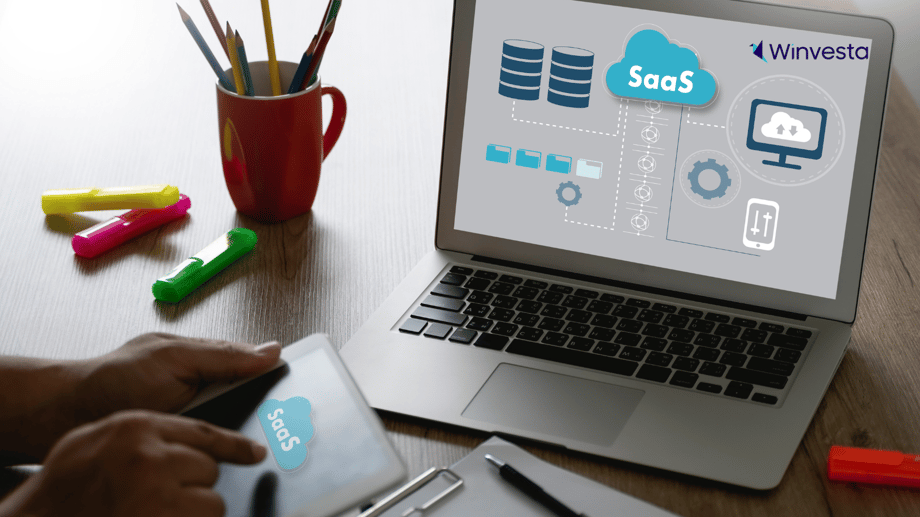Contents
SaaS for finance teams: The best tools for international operations
7 minutes read
05 July 2025

Managing international finances has never been more complex—or more urgent. With businesses expanding across borders faster than ever, finance teams are expected to handle multiple currencies, tax rules, and compliance standards on the fly. With real-time reporting expectations and decentralised teams, it's clear that spreadsheets and legacy systems simply don't cut it anymore.
For many companies, the move to global operations brings growing pains. You may encounter delayed consolidations, misaligned data across countries, or unexpected fees resulting from poorly managed conversions. Sound familiar? Disconnected tools often lead to errors, inefficiencies, and compliance risks, particularly when handling cross-border financial transactions.
This is where SaaS tools for finance come into play. These cloud-based platforms are enabling global finance teams to make faster decisions, stay compliant, and reduce the time spent on manual tasks. Whether you're setting up overseas entities or handling multi-currency transactions, the right SaaS solution can bring clarity and control across all your financial processes.
In this blog, we'll help you understand why SaaS matters for international finance teams. We'll break down the top challenges in cross-border finance, share the must-have features in any global tool, and list some of the best platforms available today, ranging from global accounting software to finance automation and fintech SaaS platforms. Whether you're a CFO planning global expansion or a controller overwhelmed with reconciliation backlogs, you'll find practical insights to improve your systems. Let's start by exploring why today's finance teams rely on SaaS to operate globally.
Why finance teams need SaaS tools for global operations
The complexity of managing cross-border finance
Traditional finance systems weren't built for businesses operating across multiple countries. When you're working with different currencies, tax codes, and local regulations, things get complicated fast. Manual data entry and disconnected systems increase the risk of human error and slow down reconciliation across entities.
Cross-border finance involves transferring money across jurisdictions, managing local compliance requirements, and reporting in multiple formats. Tracking exchange rates and calculating fees manually can lead to inaccuracies and unexpected losses. Additionally, inconsistent data systems across regions often lead to delayed financial closes and reporting gaps.
For companies expanding internationally, relying on outdated tools can stall efficiency and damage accuracy. Real-time data access and automation are no longer just nice to have—they're essential for managing global complexity.
SaaS as a strategic solution for global scale
SaaS tools for finance are popular for a reason: they centralise operations in the cloud and automate routine processes. For internationally active businesses, this also brings the flexibility to adapt to new markets more quickly.
Instead of maintaining separate tools for each country, finance teams can manage everything—payments, reconciliations, tax filings—from one connected platform. SaaS solutions support integrations with banks, ERPs, payroll tools, and tax authorities worldwide.
And because they're cloud-based, SaaS platforms offer consistent access across teams, offices, and time zones. You get better collaboration, faster closes, and easier audits. This global alignment saves time and significantly reduces overhead costs.
Key operational pain points SaaS addresses.
Modern SaaS platforms address specific issues that global finance teams encounter daily. Here's what they typically help with:
- Multi-currency accounting and automatic FX conversions
- Compliance with local tax laws and cross-border reporting standards
- Automated invoicing, approvals, and audit trails
- Real-time visibility into cash flow and consolidated financials
- Integration with payroll, banks, and procurement systems
For growing companies, these features aren't just convenient—they're essential to keep pace with the increasing complexity of cross-border finance. Next, let's examine the top SaaS tools designed for international financial operations.
Top SaaS tools for managing international financial operations
%20-%202025-07-05T122513.796.png?width=1600&height=900&name=Blog%20images%20(2)%20-%202025-07-05T122513.796.png)
Must-have global accounting software
Choosing the right global accounting software is the first step in effectively managing international operations. Tools like Xero, NetSuite, and Zoho Books handle core accounting across multiple regions while supporting key localisation requirements.
NetSuite stands out for enterprise-scale companies, with built-in features for multi-entity consolidation and international tax compliance. Xero is ideal for small to mid-sized businesses, offering a clean user experience and strong integrations with banking and payroll services in over 180 countries. Zoho Books supports over 14 languages and provides a solid, low-cost option with country-specific compliance modules.
Each platform offers cloud-native access, customisable reporting, and audit-ready record keeping—features essential for finance teams handling currency fluctuations and regional deadlines.
Best SaaS for multi-currency support and compliance
When you're transacting across borders daily, tools that can automatically convert currencies and track historical rates are non-negotiable. That's where Tipalti, Airwallex, and Wise come in.
Tipalti simplifies vendor payments and W-8/W-9 tax form collection—essential for U.S. companies paying international contractors. Airwallex combines treasury functions, card issuance, and payment collections across more than 50 currencies. It also ensures local compliance in the APAC, EU, and U.S. Wise offers real exchange rates, batch payments, and permission controls, perfect for finance teams managing high volumes of recurring transactions.
These SaaS tools for finance help reduce FX losses and streamline global accounts payable workflows—all while keeping you compliant with local financial rules.
Platforms excelling in cross-border transactions
Fast, compliant global payments can make or break daily operations. Some fintech SaaS platforms are designed specifically to address this challenge.
Deel offers payroll and contractor payments in over 150 countries with just a few clicks. Payoneer supports mass payouts and is widely used by e-commerce and media businesses. OFX handles larger transfers and offers customisable FX risk management tools.
If your business requires efficient cross-border payments, integrating with one of these platforms can streamline your operations and reduce errors.
Now that you've seen which tools stand out, let's look at which features matter most when selecting a SaaS platform for international finance.
Features finance teams should look for in global SaaS platforms.
Must-have automation features for efficiency
When your team runs international operations, manual processes often fail to scale. Finance automation is crucial for minimising human error and reducing processing delays. The best SaaS tools for finance offer automation across key workflows.
Look for platforms that automate:
- Invoice generation and delivery
- Bank reconciliations across multiple accounts
- Recurring billing and subscription management
- Real-time financial reporting and dashboards
For example, Xero allows you to schedule recurring invoices and automatically reconcile bank transactions. NetSuite utilises AI to categorise expenses and automatically flag anomalies. These capabilities save hours per month and ensure accuracy, particularly when handling multiple entities and currencies.
Regulatory and compliance tools built in
Dealing with cross-border finance involves staying up-to-date with tax rules, audit standards, and reporting laws in each region. Your SaaS platform must help, not hinder, compliance.
Prioritise tools that include:
- Built-in VAT, GST, and local tax rate support
- Automated generation of tax forms and local filings
- Audit trails with time-stamped change logs
- Role-based access control for financial data
Tipalti, for instance, helps U.S. companies auto-generate 1099s and collect W-8/W-9s from foreign vendors. Zoho Books offers regional tax rules baked into its templates. Without these tools, staying compliant becomes a manual and risky process.
Multi-entity and currency capabilities
If you operate in more than one country, your system must support multiple tax IDs, currencies, and reporting structures. That's where globalisation-ready features become non-negotiable.
You'll want SaaS tools that allow you to:
- Consolidate financial data from multiple subsidiaries
- Handle currency conversions using real-time and historical FX rates
- Produce localised reports in different languages and formats
- Manage inter-company transactions and eliminations
NetSuite and Airwallex both allow finance teams to toggle between currency views and generate region-specific statements. These features prevent reporting blind spots and simplify the month-end close across entities.
These features not only reduce effort but also increase accuracy and visibility, setting CFOs up for smarter decisions at scale.

Small financial savings lead to big wins for your business!
- Collect from 130+ countries.
- Local USD, GBP, CAD, EUR accounts.
- Free FIRA
How CFOs benefit from international SaaS adoption
Better decision-making through data visibility
SaaS for CFOs isn't just about checking compliance boxes. It's about gaining a complete, real-time view of financial health across every region. With finance dashboards pulling live data from multiple entities, you don't have to wait weeks for consolidated reports.
Tools like NetSuite and Zoho Books let CFOs track burn rates, cash flow, and FX exposure from one screen. You can compare actuals vs. budgets across currencies without exporting into spreadsheets.
More importantly, cleaner and centralised data supports faster decisions. Whether you're planning a product launch in the UK or evaluating a vendor in Southeast Asia, you've got numbers you can trust. By identifying irregularities early, you can reduce financial risk across jurisdictions.
Scalability without overextending the team
Expanding into new markets usually means more complexity—new tax rules, bank accounts, and reporting formats. However, SaaS tools for finance help CFOs grow the business without increasing headcount at the same pace.
With finance automation, a single team in Mumbai can run the month-end close for entities across five countries. Or a controller in Berlin can schedule vendor payments across three time zones with Airwallex. SaaS reduces the time spent on low-value tasks, allowing teams to focus on analysis rather than data entry.
This means CFOs can support more regions and make strategic hires only when truly needed. The right fintech SaaS platforms turn scaling into a systems decision, not a staffing one.
Now that you understand which SaaS tools for finance support international needs, it's clear that choosing the right platform can reduce errors, save time, and support compliance in every market you serve.
Your next step involves evaluating your current finance stack. Where are the gaps in automation, currency management, or cross-border workflows? Compare your needs against tools like Xero, Tipalti, or Airwallex. And if decisions are complex, consider consulting a partner like Winvesta to assess what best fits your global expansion strategy.
This will help you build a smoother, more responsive finance operation without overloading your team. With the right fintech SaaS platforms, you'll gain clarity, control, and complete visibility—no matter how many entities, currencies, or countries you manage.
Frequently asked questions about SaaS tools for international finance?


Contributed by Denila Lobo
Denila is a content writer at Winvesta. She crafts clear, concise content on international payments, helping freelancers and businesses easily navigate global financial solutions.



